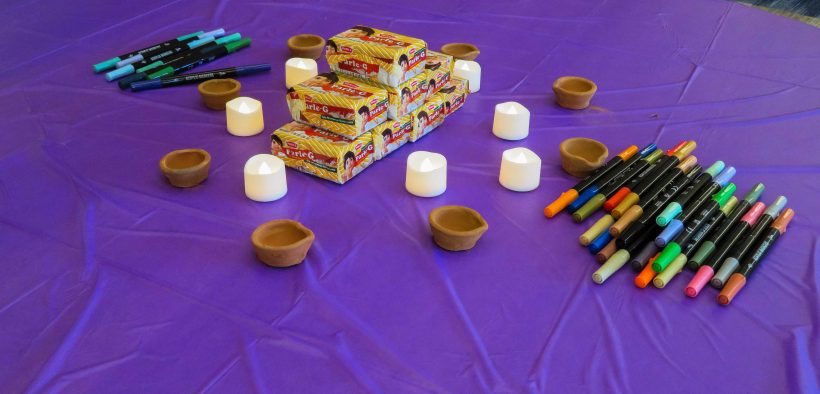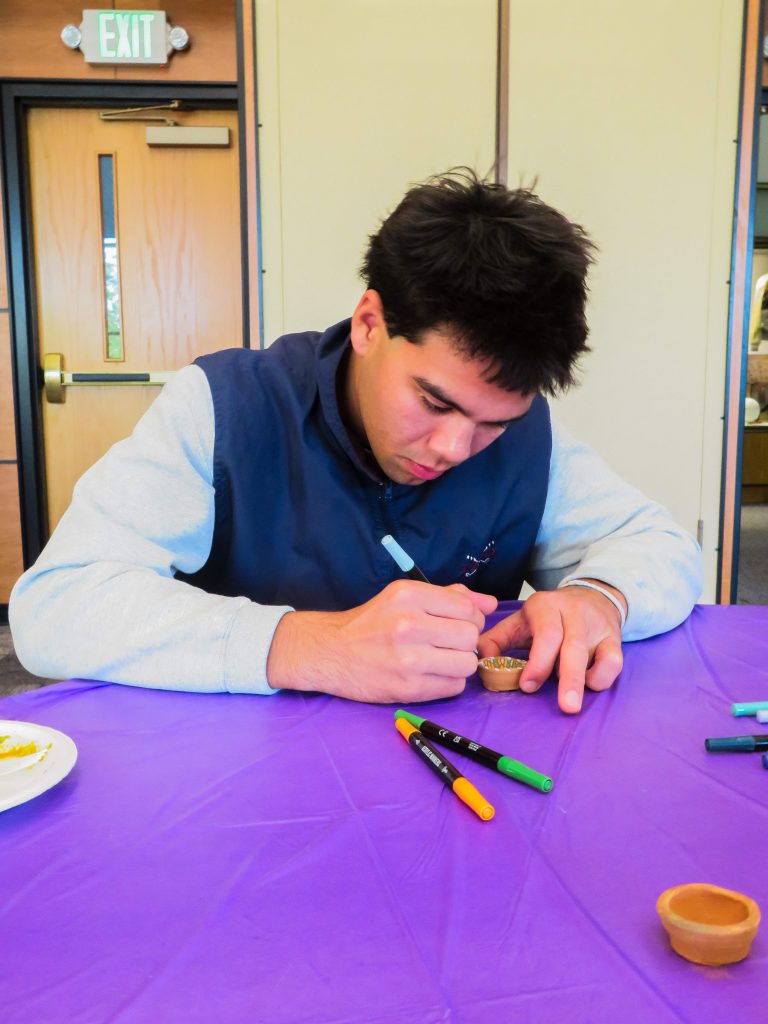Diwali in McCombs: ASA Hosts Traditional Indian Holiday for SU Students
Share

On October 29th, the Asian Student Association (ASA) hosted an event to celebrate Diwali in the McCombs Bathroom. Students got the opportunity to try new foods and get artistic with colored sand and candle holders. But what is Diwali about?
Diwali, derived from the Sanskrit word dipavali, meaning “row of lights,” is the biggest holiday in India. Known as the “Festival of Lights,” it was given its name by the rows of clay lamps that are lit outside of homes to symbolize the inner light that protects them from spiritual darkness. Depending on where you live in India, there are many interpretations of how the story originated. For example, in northern India, it features the story of King Rama’s return to Ayodhya after he defeated Ravana, a ten-headed demon king. However, in southern India, it celebrates the story of how Lord Krishna defeated the demon Narakasura. But one thing is certain: the festival commemorates the victory of good over evil, light over darkness.
Diwali is celebrated over five days, this year on October 18th-23rd. The first day ushers in prosperity and wealth, and observers clean their homes and shop for gold or kitchen utensils to bring good fortune. The second day has people decorating their homes with clay lamps and creating rangoli, design patterns made by colored sand or powders, on their doorsteps to welcome guests and ward off evil.
The third day is the main day of the festival, the day of Diwali itself, where families gather together at the temple and pray to Lakshmi puja, Goddess Lakshmi, the divine bestower of wealth and prosperity. Afterwards, they hold a feast and fireworks festivities to celebrate the victory of light and ward off evil spirits. The fourth day marks the first day of the new year in Hinduism and is a tribute to nature’s gifts. Friends and family visit with gifts to celebrate the season and express gratitude toward the Earth and nature. Finally, the fifth day celebrates the bond between siblings. Sisters perform the religious ritual of aarti, a ceremony of light, for their brothers and apply a sacred mark to their foreheads as a symbol of love, protection, and blessings. In return for this prayer, brothers visit their sisters and bring them gifts, symbolizing love and commitment.

Diwali is also all about sharing, and, to commemorate the holiday, the ASA brought together students to experience the holiday for themselves and to learn about Hindu traditions. The organization catered delicious food from the Indian restaurant Namaste, which included dishes like samosas, cauliflower wings, veggie dumplings, and spring rolls. The tables’ setup also included small packages of Parle-G, Indian glucose biscuits, and rangoli ornaments, each with different patterns, that attendees could decorate with different colored sand. Students could also have fun with diya painting, using markers to decorate little clay candle holders.
This celebration was a great opportunity for students to learn about a holiday from a different culture and experience the festivities that are used to celebrate Diwali. The good food and the interaction between students symbolizes a great foundation of the spirit of Diwali. Make sure to keep an eye out for future events hosted by the Asian Student Association!
